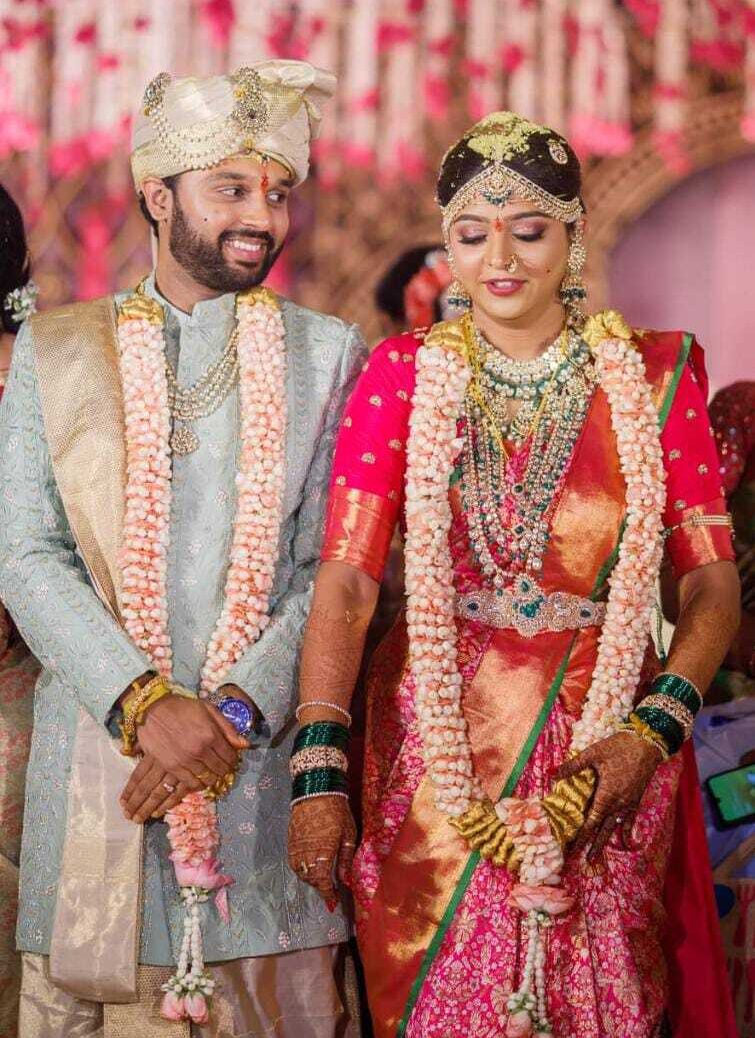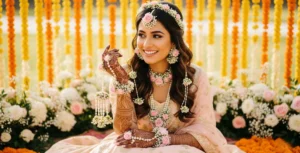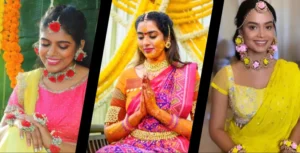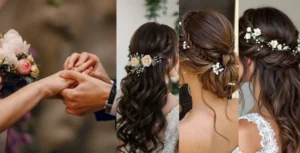South Indian weddings are famous for their splendor, intricate cultural customs, and exquisite clothing. Not only is the attire put on during these weddings exquisite, but it also has deep religious and cultural significance.
This article will walk you through the many traditional attires worn by the bride and groom, as well as provide you with some insight into the regional differences and accessories that really set South Indian wedding attire apart. So let’s get started.
Tips for Achieving a Flawless South Indian Bridal Look
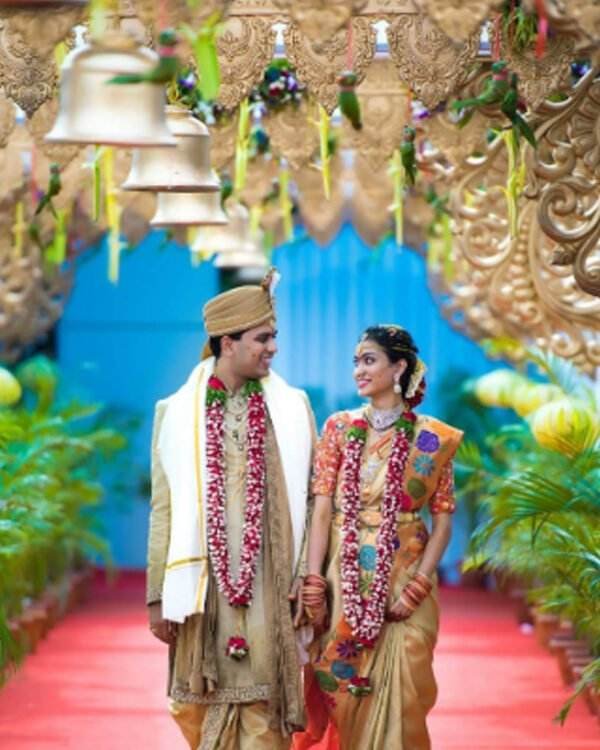
1. Draping Techniques for Kanjivaram Sarees
Draping a Kanjivaram saree is an art form that highlights the rich craftsmanship and elegance of this traditional South Indian outfit. A bride must ensure she has all the necessary accouterments, such as a well-fitted blouse, a well-pleated matching skirt, and safety pins, before beginning to drape the saree.
2. Tips for Choosing and Styling Traditional Gold Jewelry
Traditional gold jewelry completes the South Indian bridal appearance by providing a sense of grandeur and cultural history. While it may be tempting to go all out with jewelry, balance is essential. If your attire is modest, you can choose more elaborate jewelry to accentuate elegance.
3. Hair Care Tips for Braided Hairstyles
Maintaining healthy hair is critical for any bride, especially when trying different hairstyles. Here are some hair care suggestions:
- Regular Washing and Conditioning: Use a moisturizing shampoo and conditioner to keep your hair hydrated and manageable.
- Detangling: Use a wide-toothed comb before braiding to avoid knots and damage.
- Gentle Hair Ties: Use soft fabric-covered elastics or hair-friendly scrunchies to prevent breakage and discomfort.
The Bride’s Attire
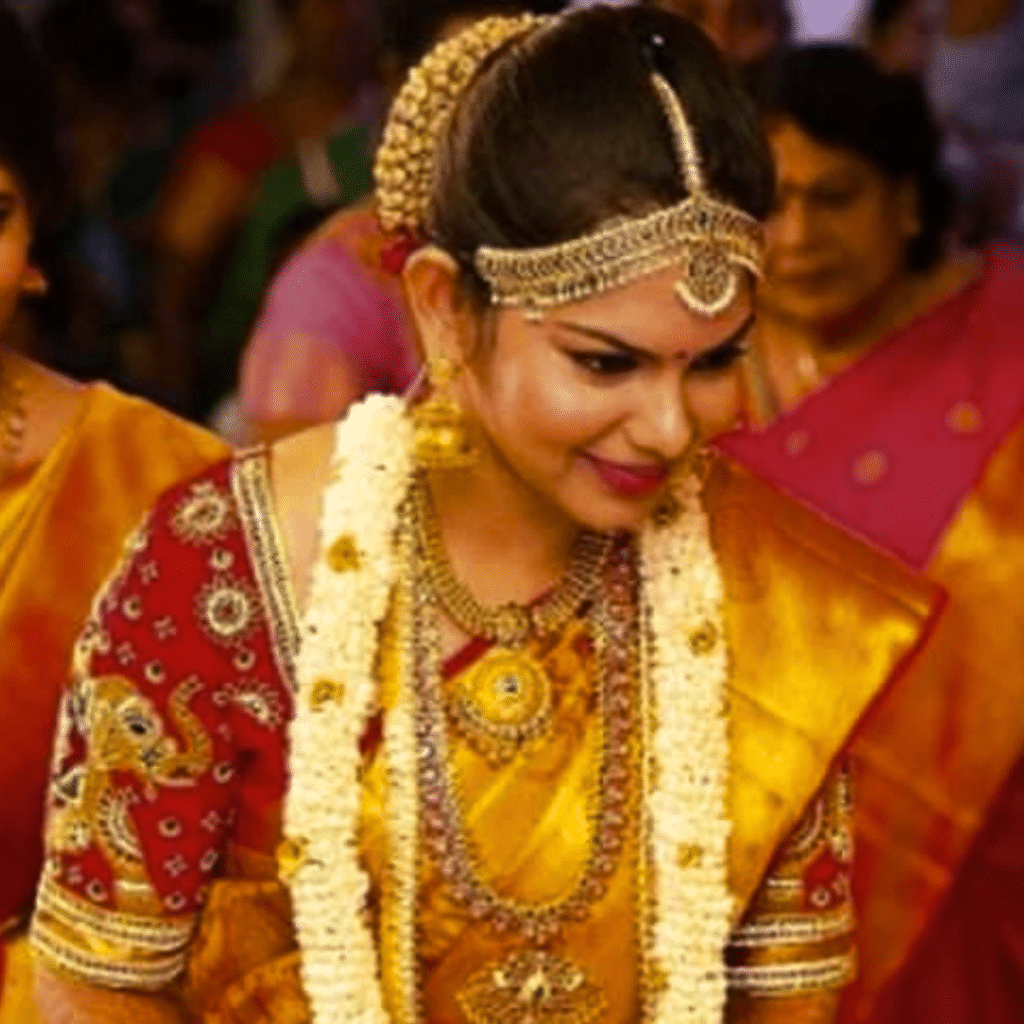
1. Kanjeevaram Saree
The Kanjeevaram saree is synonymous with South Indian bridal wear. These sarees are renowned for their durability, sheen, and intricate designs. Typically, they come in bold colors such as red, gold, and green, which are considered auspicious. The motifs on Kanjeevaram sarees often include traditional symbols like peacocks, temples, flowers, and mythological figures, which are woven using gold or silver zari.
2. Madisar Saree
The Madisar saree is unique to Tamil Brahmin brides. This nine-yard saree is wrapped in a style that combines elements of a saree and a dhoti, signifying the bride’s transition to a new phase in her life. The draping style of the Madisar is both elegant and practical, allowing freedom of movement while maintaining a traditional look.
3. Pattu Pavadai
Pattu Pavadai, or silk pavadai, is a traditional attire for young brides during pre-wedding ceremonies. This outfit includes a silk skirt (pavadai) paired with a blouse (choli), often embellished with zari work. It is particularly popular in Tamil Nadu and Kerala for its comfort and youthful charm.
4. Mekhela Chador
In certain South Indian communities, brides may also wear the Mekhela Chador, especially if they have roots in the neighboring northeastern regions. This two-piece garment includes a skirt-like lower part (mekhela) and an upper part (chador), often made of silk with intricate designs.
The Groom’s Attire
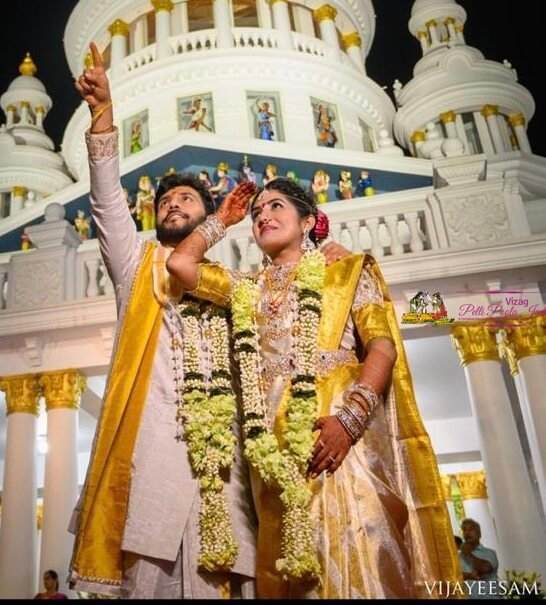
1. Veshti
The veshti, or dhoti, is a traditional garment for South Indian grooms. This unstitched cloth is wrapped around the waist and legs, typically measuring about four to five meters in length. Grooms often wear veshtis made of silk, cotton, or a silk-cotton blend, with borders decorated with gold zari to signify prosperity.
2. Angavastram
The angavastram is a shawl-like cloth draped over the shoulders, complementing the veshti. It can be plain or embellished with zari borders, adding an extra touch of elegance to the groom’s attire. In some communities, the angavastram is also used to cover the upper body, symbolizing respect and modesty.
3. Sherwani
While traditional attire remains popular, some South Indian grooms opt for a sherwani, especially in more cosmopolitan areas. A sherwani is a long coat-like garment worn over a kurta and churidar or pyjama. It is often richly embroidered and can be made of silk, brocade, or other luxurious fabrics, lending a regal appearance.
Regional Differences
South India comprises several states, each with its own distinct traditions and styles of wedding attire.
1. Tamil Nadu
In Tamil Nadu, a vivid Kanjeevaram saree in striking hues like scarlet, maroon, or green is usually worn by the bride. The groom typically wears an angavastram and veshti, frequently with a silk shirt.
2. Kerala
Kerala brides don the traditional cream-colored Kasavu saree, which has a golden border. It is elegant and simple in every way. The groom typically dons a white or cream shirt with a mundu, which is akin to a veshti.
3. Karnataka
In Karnataka, brides often opt for Mysore silk sarees known for their rich texture and vibrant colors. The groom’s attire is similar to that in Tamil Nadu, with the veshti being a common choice.
4. Andhra Pradesh and Telangana
Brides in Andhra Pradesh and Telangana often wear Pochampally or Gadwal sarees, known for their intricate weaves and vibrant colors. The groom’s attire typically includes a silk dhoti and a kurta.
Conclusion
In conclusion, the rich cultural legacy of the South Indian region is reflected in the wedding costume, with each piece of clothing and accessory having a deep symbolic value. Every aspect of the bride and groom’s dress, from the gorgeous Kanjeevaram sarees to the traditional veshtis and the exquisitely carved jewelry, adds to the grandeur and beauty of the occasion. South Indian wedding clothing never fails to enthrall with its timeless elegance and charm, whether it’s worn for a modern celebration fusing old and new or a traditional ceremony steeped in centuries-old customs.
FAQ
1. How can couples incorporate sustainable practices into their selection of South Indian wedding attire?
Couples interested in sustainability can explore options such as renting or borrowing attire, repurposing family heirlooms, or choosing eco-friendly fabrics and materials for their wedding attire. Additionally, supporting local artisans and craftsmen who specialize in traditional handwoven textiles can help promote sustainable practices within the industry.
2. Are there any specific rituals associated with the selection of wedding attire in South Indian culture?
Yes, indeed! In some South Indian communities, there are rituals dedicated to selecting the bride’s attire, known as “pattu kattuthal” or “saree kaathu.” This ritual involves the bride’s family presenting her with a set of sarees, symbolizing their blessings for her future marital life.
3. How do modern couples put a contemporary spin on traditional South Indian wedding attire?
Modern couples often infuse their wedding attire with personal touches and contemporary elements. For example, brides may opt for lighter fabrics or experiment with unconventional color combinations, while grooms might choose tailored fits or incorporate modern accessories like watches or cufflinks into their ensemble.

